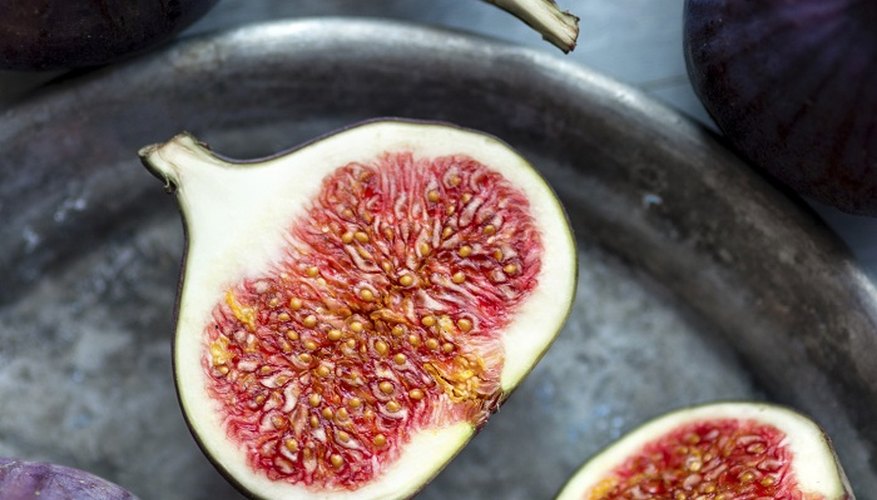Tender, plump and sweet, fresh figs are very popular in Europe and along the Mediterranean but aren't widely used in the UK. A member of the mulberry family, the fig possesses a sweet, chewy flesh and crunchy edible seeds. This ancient fruit is usually available from June to September and can be found in select supermarkets and produce markets. Figs may be eaten raw or cooked in recipes.
- Tender, plump and sweet, fresh figs are very popular in Europe and along the Mediterranean but aren't widely used in the UK.
Buy fresh figs from the fruit section of a supermarket or a market stall. Look for plump and tender figs with a deep purple colour. They should give off a slightly sweet scent. Avoid figs that are hard, mushy or sour-smelling. If your supermarket does not stock figs, try a speciality or health food shop.
Wash the fresh figs in cool water. Since figs have a delicate skin and flesh, be careful not to bruise them as you handle and wash them.
Cut off the small stem at the top of the fig with a sharp knife.
Figs are usually eaten whole -- skin and all. There is no need to cut the fig into smaller pieces or to remove the seeds. Simply pop the fig into your mouth and enjoy.
Wrap figs with thin pieces of cooked pancetta (Italian bacon) for a sweet and savoury snack. Stuff figs with chopped almonds and mascarpone cheese for a delicious appetizer. Chop figs and add them to oatmeal or a salad.
- Wash the fresh figs in cool water.
- Stuff figs with chopped almonds and mascarpone cheese for a delicious appetizer.
TIP
Since figs spoil quickly, remember to eat them within two days. Store figs in the refrigerator.
Figs bruise easily. To keep your figs firm, store them on a paper-towel lined plate.
Cover figs with plastic wrap to keep them moist.
Figs are a good source of potassium and dietary fibre.
